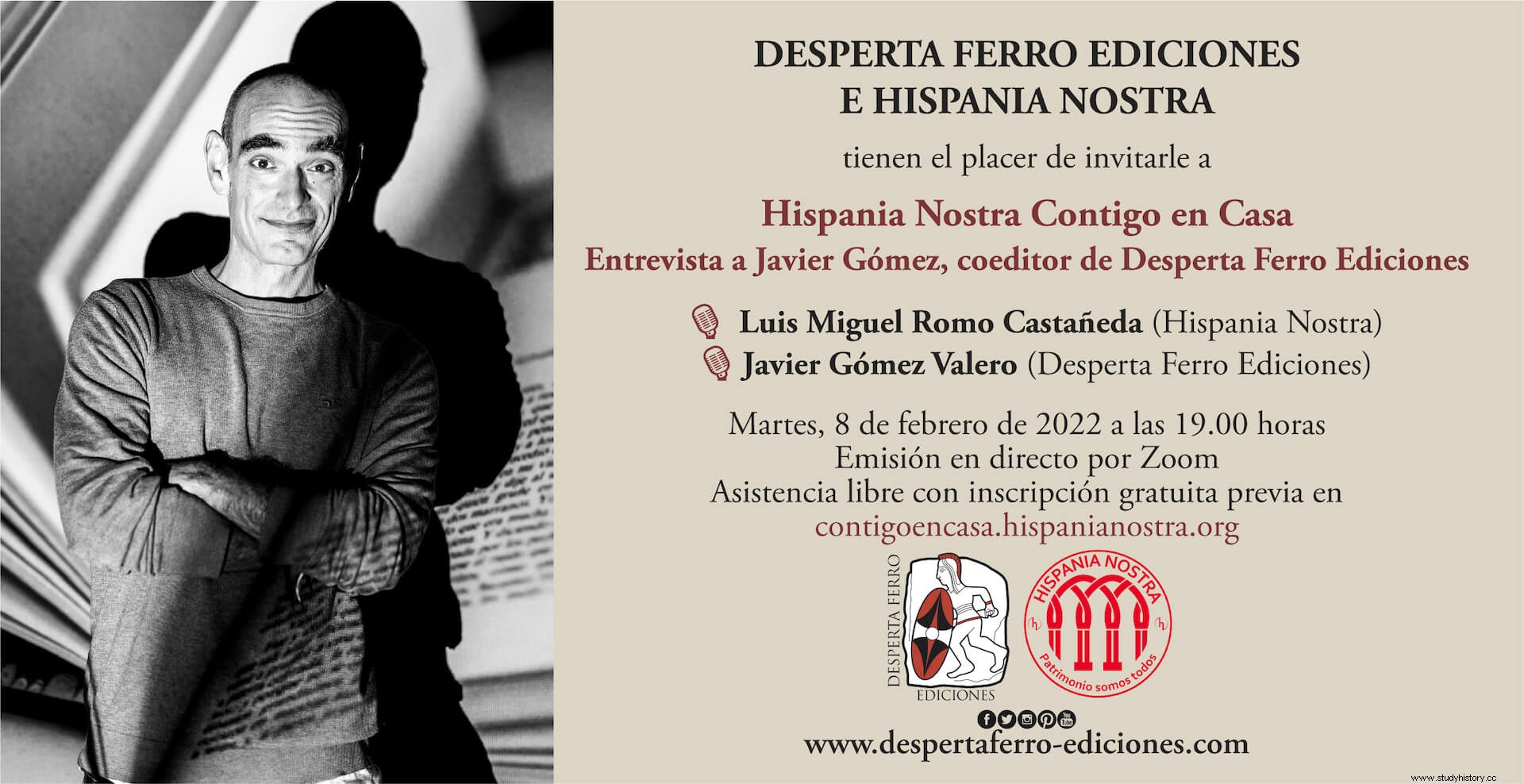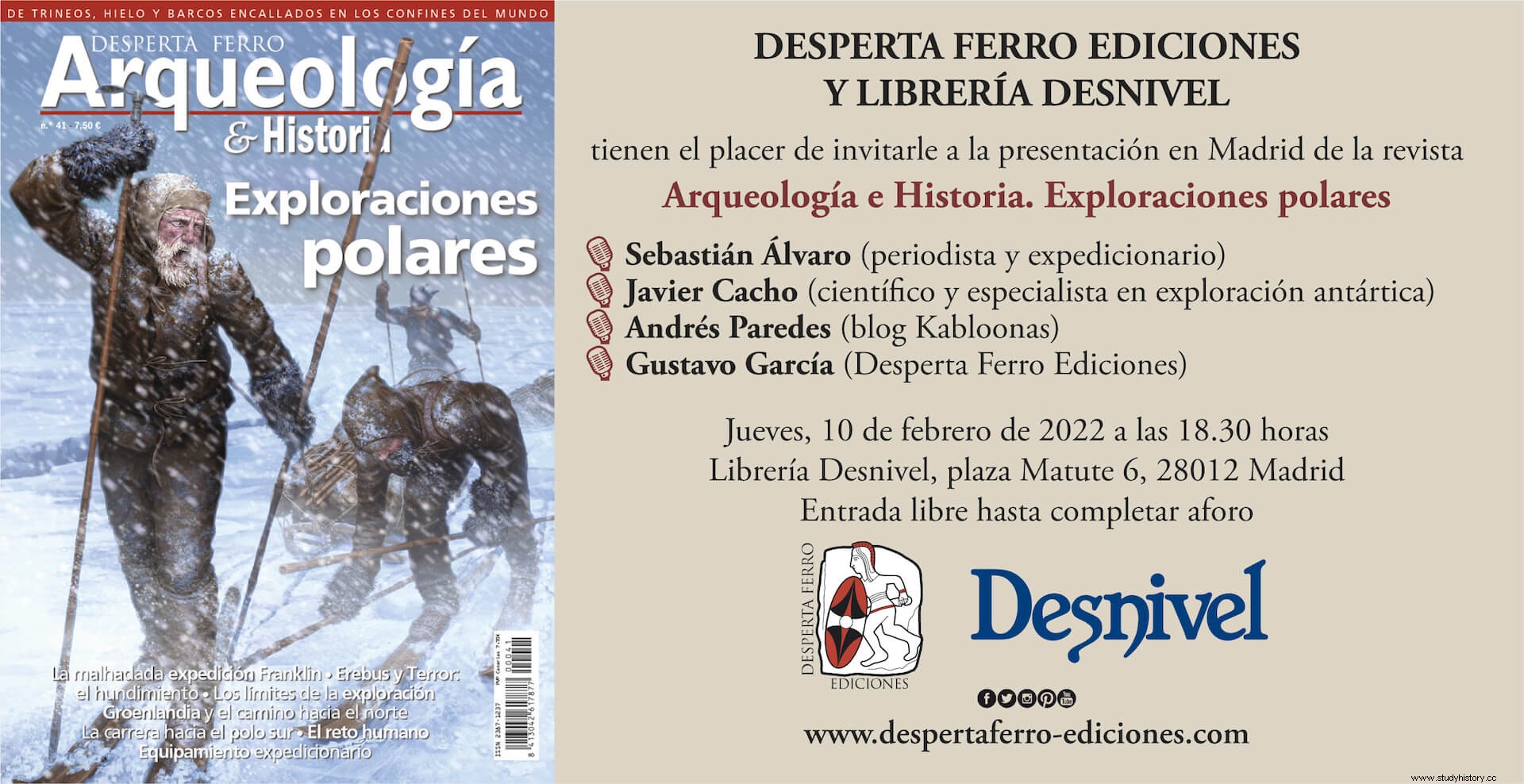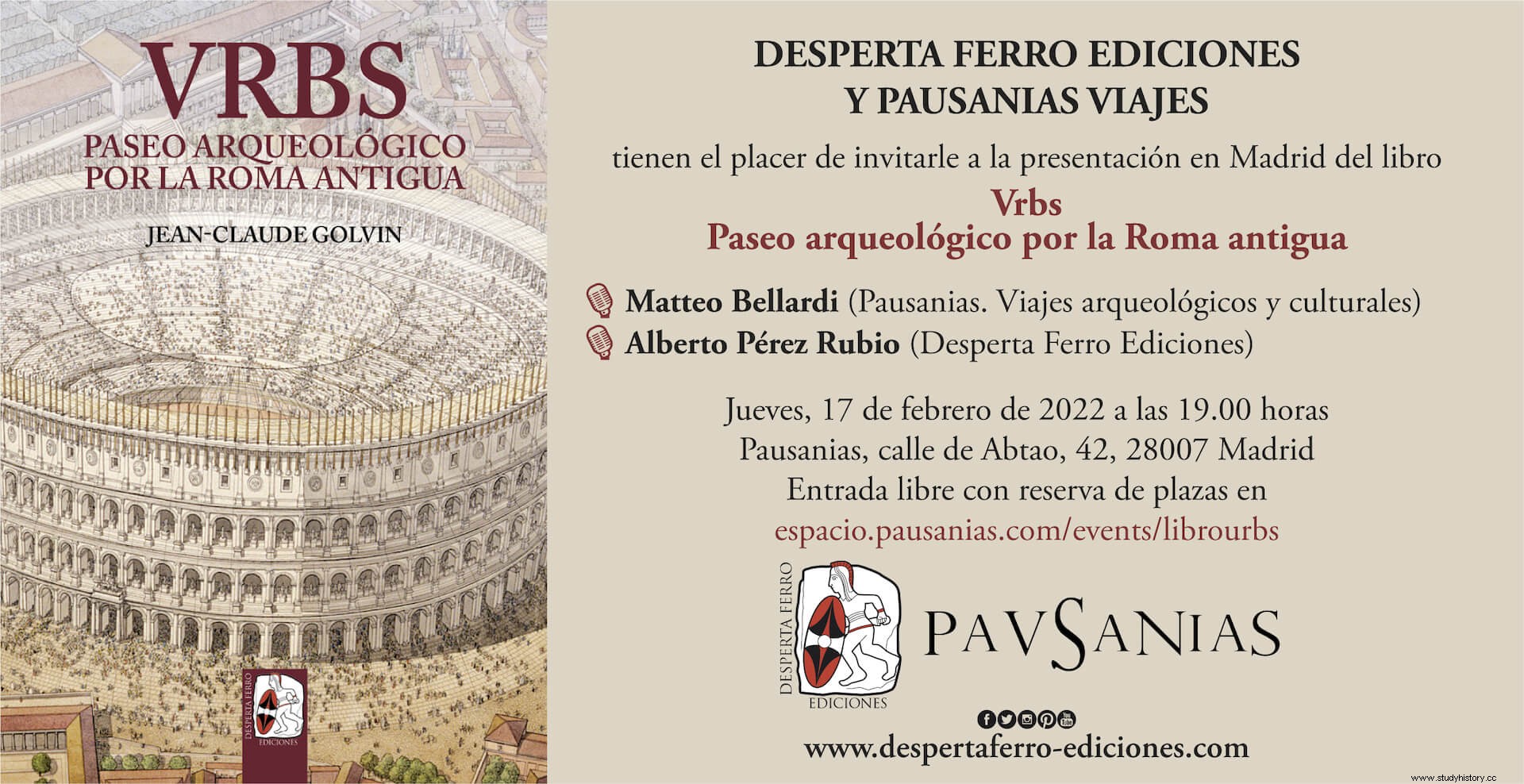
Hispania Our With You at Home. Interview with Javier Gomez, co-editor of Awakening Ferro Editions
 Tuesday, February 8
Tuesday, February 8 7.00pm
7.00pm Zoom (link https://bit.ly/3upogBu · Meeting ID 811 3374 2265)
Zoom (link https://bit.ly/3upogBu · Meeting ID 811 3374 2265) Free attendance with free prior registration here
Free attendance with free prior registration here  Luis Miguel Romo Chestnut (Our Spain)
Luis Miguel Romo Chestnut (Our Spain)
 Javier Gomez Valero (Iron Awakening Publishing House)
Javier Gomez Valero (Iron Awakening Publishing House)
“Hispania Nostra contigo en casa” was born with a mission:to take our heritage to any corner of the world. We are certainly lucky to say we are achieving it, but this 2022 we want to fly even higher. And we want to do it for you. Therefore, we have decided to expand our usual program of evenings with new formats and faces. So we debut starting next Tuesday, with a betting encounter between Javier Gómez, historian and founder of the mythical Iron Awakening, and the archaeologist Luis Miguel Romo. Meet the publishing house that is creeping up among history and archeology buffs. A pioneering opportunity to discover the alma mater of a publishing house that is growing like the foam. And that it will help us reflect on the importance of outreach and entrepreneurship from the humanities. Don't miss this appetizing appointment! Hispania Nostra faces new challenges with unparalleled determination. It has an eagerness to grow and innovate, but above all to keep reveling itself against oblivion.
Access all information and the full program by clicking here.

Presentation Polar Explorations and Descent
 Thursday, February 10
Thursday, February 10  6.30pm
6.30pm
 Desnivel Bookstore, Matute Square 6 (Madrid)
Desnivel Bookstore, Matute Square 6 (Madrid)
 Free attendance until completion of forum (30 people)
Free attendance until completion of forum (30 people)
 Sebastian Alvaro (journalist and expeditionary)
Sebastian Alvaro (journalist and expeditionary)
 Javier Cacho (scientist and specialist in Antarctic exploration)
Javier Cacho (scientist and specialist in Antarctic exploration)
 Andrew Paredes (Cable blog)
Andrew Paredes (Cable blog)
 Gustavo Garcia (Awakening Ferro Publishing House)
Gustavo Garcia (Awakening Ferro Publishing House)
Throughout the 19th century and during the first decades of the 20th hundreds of polar explorations were conducted to the Arctic and Antarctic regions. They were the last remaining confines of Earth to be known, and to it multitudes of states and private initiatives devoted themselves diligently and with better or worse luck –often resulting from uneven planning or the various possibilities offered by technology and knowledge priors of every moment–. They were icy regions, infested with dangers and extreme cold; places almost devoid of life most of the year, far from the warmth of home. In such extreme conditions, the human being was capable of both the best and the worst. In their frigid latitudes, whether in the fruitless search for a mythical pass connecting the Atlantic with the Pacific through northern America or in the tremendous effort it would suppose to reach the poles, hundreds of lives were lost, the greatest heroics were performed , the most impactful scientific discoveries were made and the limits of survival were tested as never before.

Presentation Vrbs. Archaeological walk through ancient Rome in Pausanias
 Thursday, February 17
Thursday, February 17
 7.00pm
7.00pm
 Pausanias. Archaeological and cultural travel, c/ de Abtao 42 (Madrid)
Pausanias. Archaeological and cultural travel, c/ de Abtao 42 (Madrid)
 Free attendance with free prior registration here
Free attendance with free prior registration here
Matteo Bellardi (Pausanias. Archaeological and Cultural Travels)
 Alberto Perez Rubio (Awakening Ferro Publishing House)
Alberto Perez Rubio (Awakening Ferro Publishing House)
You couldn't miss the work of Jean-Claude Golvin, the talented archaeologist, architect and illustrator specializing in reviving classical Antiquity, a book about the city that symbolizes them all cities, about the urbe par excellence, about Rome. On this occasion, Golvin plunges us into the Rome of the High Empire and its pages take us from the bustling Forum to the majestic Palatine, escaping us also to its outskirts, the harbor of Ostia or the villa of Hadrian. Golvin’s colorful watercolors resurrect from its ruins temples and palaces, circuses and theatres, as well as the neighborhoods of the metropolis that, for five centuries, was caput mundi, the capital of the orb, where the most beautiful and lavish buildings were erected. These illustrations dialogue with photographs of the current state of such monuments, an original approach that serves to understand and explain the diachrony of archaeological sets. Vrbs. Archaeological walk through ancient Rome it is one of those attempts to cross limits, it is one of these possible infinite archaeological walks through Rome, the city to which all roads led and which all of us who love history sigh to tour.
